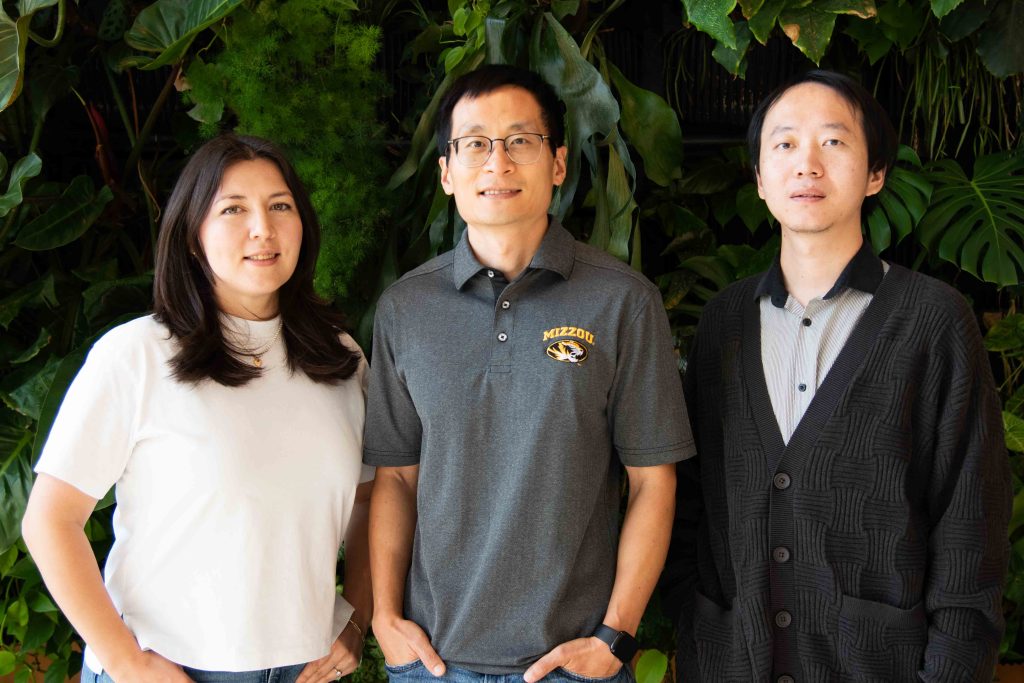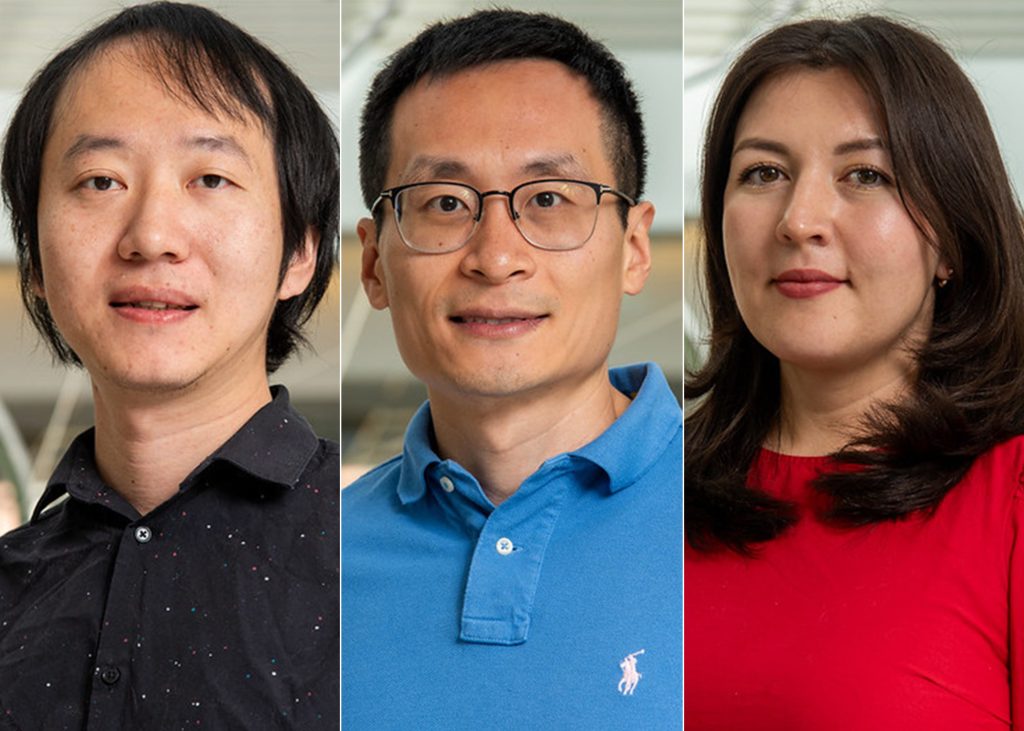Published on

By Sophie Rentschler | Division of Research
Ti Lu spends her days perfecting a vaccine, giving shots to charge mouse immune systems to fight off disease, but the hefty data from her samples needs the expertise of Mizzou’s Bioinformatics and Analytics Core (BAC) to help make sense of it.
To prevent Shigella flexneri — a bacterium that can cause severe diarrhea in third world countries — the assistant research professor in the lab of Wendy Picking at Bond Life Sciences Center, has to sort through troves of data unveiled from mice organelles given versions of the vaccine. That requires sophisticated analysis techniques and terabytes of storage.
Since the Picking lab doesn’t have its own data analysts, Lu funnels her results to the BAC, a hub of data scientists who provide supercomputer storage, experimental design mentorship and multiple analysis services for hefty datasets that can be produced by research queries.
Analyzing what mountains of experimental data means can often be the slowest step, a costly and complicated bottleneck that holds labs back from publishing and the next level of their exploration. With decades of experience, the BAC team streamlines the process thanks to extensive experience in best practices for analysis, ensuring results are both reproducible and scalable. In Lu’s case, each sample of mouse tissue could contain about 200 gigabytes of information of all the expressed genes present.
“It would be really hard for us to do the data analysis by ourselves, and the core has the ability to dig deeper and give us more information on our samples,” Lu said. “When I get the data back from them, most of the time I say, ‘There are a lot of stories in there’ and ‘That makes sense.’”
Hong An, BAC’s interim director, said labs often don’t have a designated research assistant with coding experience to parse through data, but his core has Hellbender, the University of Missouri’s supercomputer. The core has plenty of storage for big data sets with access to this on-campus data hub, so instead of paying for their own storage, researchers can outsource computing to the core.
Principal investigators pay roughly $70,000 for a postdoctoral fellow — the standard under National Institutes of Health guidelines — if they want a dedicated scientist to conduct data analysis in a lab. An said the same research group could pursue one or two projects with the BAC for a couple thousand dollars, a fraction of the price.
That cost-effective service is why the BAC is in demand.
“Bioinformatic analysis is a core part of research in biological papers because of its ability to make conducting research easier and faster,” An said.

Digging down into the building blocks and genetic differences between samples is a key part of uncovering the basics of biological processes and how they can be leveraged for future advancements. One important part of that genetic machinery is ribonucleic acid, RNA, which is a messenger that reads instructions from DNA for the creation of proteins, the building blocks of a cell. Bioinformatic analysis of RNA gives insights to which genes are turned on and off in cells and how prevalent each are. In Lu’s case, she’s studying how her vaccine impacts a mouse’s immune system, gaining insight into whether a potential candidate results in a protective immune-building response.
There are perks of being able to turn to the BAC for Lu and other university clients who are adapting their approach and analysis as their experiments progress.
“Some professors have data that is very enriched, and outside companies can’t be involved in a specialized data analysis pipeline,” said Chunhui Xu, a BAC data scientist. “Some research needs customized experimental design and data analysis.”
An added benefit with working in-house is more frequent communication during the analysis process, which helps labs troubleshoot and answer lingering research questions.
“Sometimes as a researcher, I have some crazy ideas,” Lu said. “The core’s staff are very honest in what research inquiries may be a waste of time with data analysis.”
Core involvement can’t happen soon enough. Staff at the BAC can advise researchers as early as the experimental design phase, guiding them to ensure data is optimized for analysis and selected services are most worthwhile to answer their questions.
The BAC works closely with its upstairs neighbor, the Genomic Technology Center, and often analyzes output from its bulk RNA, single-cell and spatial transcriptome services. Lu used all three services to investigate the Shigella vaccine in mice models.
BAC’s senior bioinformatics engineer Yulia Innokenteva said to think of bulk RNA sequencing like a smoothie — all the individual berries are blended and it’s hard to distinguish the type of berries in the mix. With a single cell approach, researchers can make out the contents of their “smoothie” before its blended. They can see distinct “berries,” representing genes in the analogy.
Bulk RNA sequencing falls on the cheaper end of the spectrum but is blurrier, and single cell analysis is right in the middle in terms of price point and resolution capabilities, tagging and measuring gene expression in individual cells. Spatial transcriptomic analysis allows for a view of all genes expressed inside a sample — an example being the brain — and shows precisely where gene activity is occurring in relation to the whole tissue.
“The BAC helps researchers choose the best approach for their goals and budget,” Innokenteva said. “For example, single-cell RNA sequencing may be able to answer a researcher’s questions without the added cost of spatial analysis.” She suggests scheduling a consultation with the BAC up front to determine what approach is optimal for their experimental question.
“Every project is different,” Xu said. “There are different organisms, different sequencing methods and different biological stories.”
The core is revitalizing its teaching services across campus, rebooting hands-on data analysis workshops they hosted a few years ago. The core’s staff also plans to expand its cross-discipline collaboration to reach more researchers in the School of Medicine and College of Agriculture, Food and Natural Resources. It is especially looking to take on more single cell analysis projects.
“High-impact research often requires expertise in data analysis,” Xu said. “We want to help researchers translate their hypotheses into solid, publishable findings.”
The Bioinformatics and Analytics Core — an advanced technology core in the Division of Research, Innovation, and Impact — provides informatics and data science support services to advance science. It develops innovative tools and leverages Mizzou’s high-performance computing resources to streamline the rate-limiting steps of data evaluation to reduce the cost, time, and complexity of the analyses and tools involved. Its team of experts brings decades of expertise in implementing best-practice methods for bulk RNA-Seq, visium spatial RNA-seq, single-cell RNA-seq, proteomics, phosphoproteomics, metagenomics, and integrative multi-omics analyses. Its team has extensive experience in implementing and adapting these methods and approaches into optimized workflows designed specifically to ensure these approaches are reproducible and scalable.
The BAC is located in Suite 106 at Bond LSC. Contact Hong An about your next project at anho@missouri.edu.